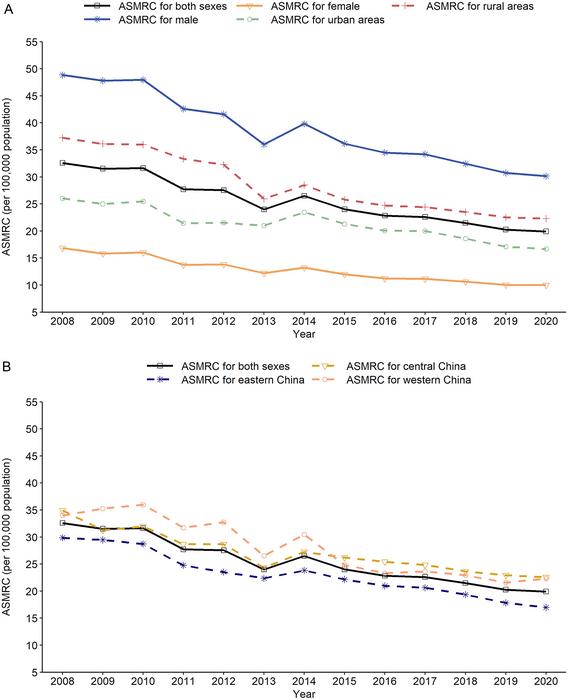China accounts for nearly half of liver cancer deaths globally. A better understanding of the current liver cancer mortality will be helpful to establishing priorities for intervention and to decreasing the disease burden of liver cancer. The study aimed to explore and predict the mortality burden of liver cancer in China.

Credit: Huixin Liu, Xiaoxiao Wang, Lijun Wang, Peng Yin, Feng Liu, Lai Wei, Yu Wang, Maigeng Zhou, Jinlei Qi, Huiying Rao
Background and Aims
China accounts for nearly half of liver cancer deaths globally. A better understanding of the current liver cancer mortality will be helpful to establishing priorities for intervention and to decreasing the disease burden of liver cancer. The study aimed to explore and predict the mortality burden of liver cancer in China.
Methods
Data were extracted from the Disease Surveillance Point system of the Chinese Center for Disease Control and Prevention from 2008 to 2020. Crude and age-standardized liver cancer mortality rates were reported by sex, urban or rural residence, and region. Trends in liver cancer mortality rates from 2008 to 2020 were estimated as average annual percentage change (AAPC). The changing trend of live cancer mortality in the future is also predicted.
Results
In 2020, the crude mortality of liver cancer was 25.57/100,000, and males and people lived in rural areas had higher age-standardized liver cancer mortality rates than females and people lived in people in urban areas. Crude mortality and age-standardized mortality rates in southwest provinces (Guangxi, Sichuan, Tibet) and in a northeast province (Heilongjiang) were higher than that in other provinces, and age-specific mortality rates increased with age. From 2008 to 2020, liver cancer mortality rates decreased, but people under 50 years of age had a higher AAPC than those over 50 years of age, possibly because of the adoption of hepatitis B virus vaccination in newborns and children. Furthermore, the mortality of liver cancer in 2021–2030 is predicted to have a downward trend.
Conclusions
We conducted a long-term data analysis of liver cancer mortality in China from 2008 to 2020 using data from the CDC-DSPs. There was an overall decreasing trend of liver cancer mortality in China in the last decade except for people 50–59 years of age and females 75–79 and >85 years of age. A higher liver cancer mortality burden was observed in males, older people, and people living in rural areas or less developed provinces. In the future, interventions to control liver cancer mortality need to focus on these groups.
Full text
The study was recently published in the Journal of Clinical and Translational Hepatology.
The Journal of Clinical and Translational Hepatology (JCTH) is owned by the Second Affiliated Hospital of Chongqing Medical University and published by XIA & HE Publishing Inc. JCTH publishes high quality, peer reviewed studies in the translational and clinical human health sciences of liver diseases. JCTH has established high standards for publication of original research, which are characterized by a study’s novelty, quality, and ethical conduct in the scientific process as well as in the communication of the research findings. Each issue includes articles by leading authorities on topics in hepatology that are germane to the most current challenges in the field. Special features include reports on the latest advances in drug development and technology that are relevant to liver diseases. Regular features of JCTH also include editorials, correspondences and invited commentaries on rapidly progressing areas in hepatology. All articles published by JCTH, both solicited and unsolicited, must pass our rigorous peer review process.
Follow us on X: @xiahepublishing
Follow us on LinkedIn: Xia & He Publishing Inc.
Journal
Journal of Clinical and Translational Hepatology
Article Title
Mortality Burden of Liver Cancer in China: An Observational Study From 2008 to 2020
Article Publication Date
19-Mar-2024



